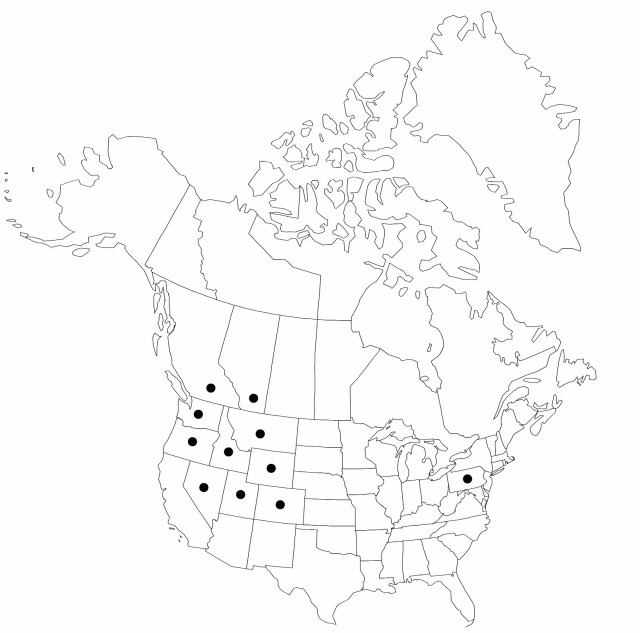Carex geyeri
Trans. Linn. Soc. London 20: 118. 1846.
Plants not cespitose, long-rhizomatous. Culms 13–49 cm, triangular, scabrous distally. Leaves: basal sheaths reddish-brown to dark-brown; blades plane, 1.1–3.5 mm wide, equaling or exceeding culms. Spike with staminate portion separated from pistillate portion by short but conspicuous internode, with pistillate portion unbranched, 7.5–26.5 × 1.3–2.2 mm. Pistillate scales brown, chartaceous, apex cuspidate to short-awned. Staminate scales reddish-brown, apex cuspidate to short-awned. Anthers 2.2–6.2 mm. Perigynia 1–3, greenish yellow to brown, with 2 marginal veins, otherwise veinless, 5–6.8 (–8.4) × 1.8–2.8 mm.
Phenology: Fruiting late Apr–late Aug.
Habitat: Dry montane and subalpine grasslands, burns, and open spruce, fir, or pine woods
Elevation: 800–3300 m
Distribution

Alta., B.C., Colo., Idaho, Mont., Nev., Oreg., Pa., Utah, Wash., Wyo.
Discussion
A disjunct population of Carex geyeri is known from Centre County, Pennsylvania, well beyond the normal range of the species in the western mountains. The site should be re-examined to determine whether it persists there and whether it was native or introduced. Carex geyeri is an important native forage species in western montane grasslands (A. Cronquist et al. 1972+, vol. 6).
Selected References
None.
Lower Taxa
"shortened" is not a number.
